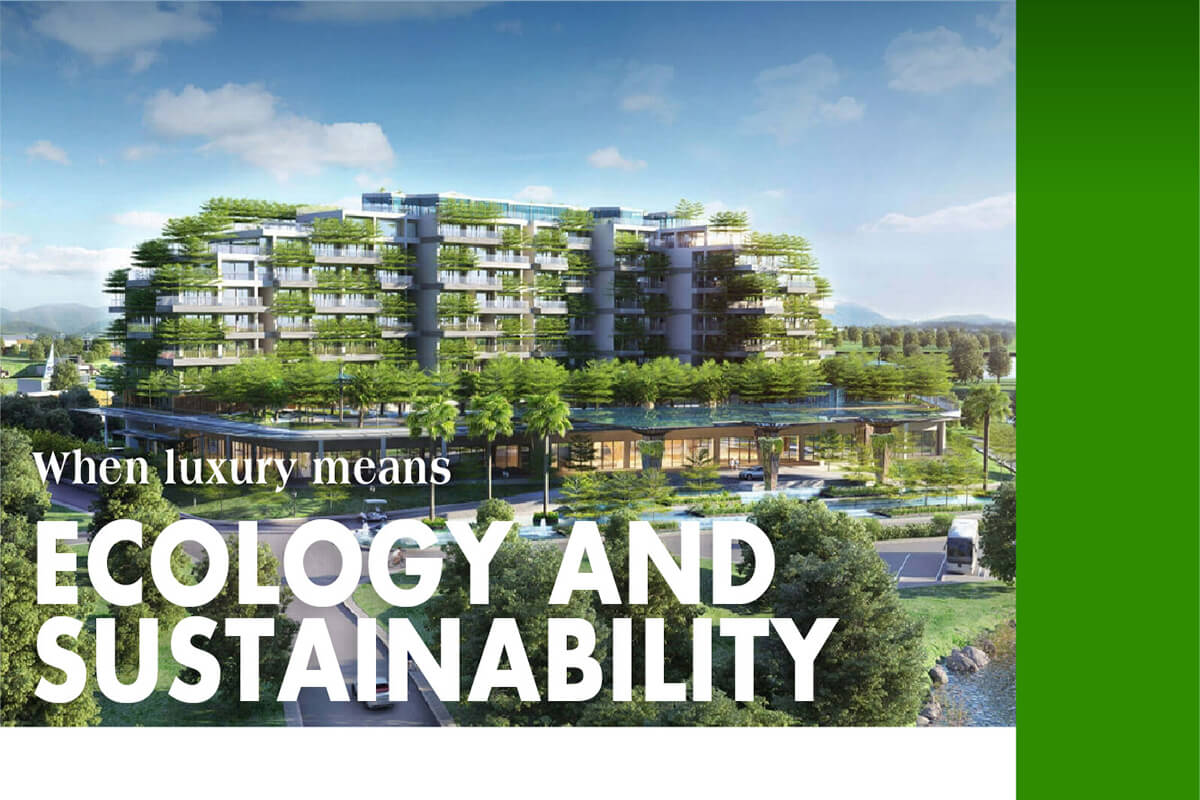Green trends in luxury homes
Let’s look through some green building trends in luxury homes all over the world with Colorbond.

Green walls
Vertical gardens inside homes or so-called alive green walls are currently becoming attractive options for home buyers all over the globe. It can be seen that the heyday of traditional construction with reinforced concrete has been replaced by green homes where large-scale gardens are integrated on the surface of indoor or outdoor walls to connect urban residents with nature. Apart from the mere decoration function, green plants cool the air, absorb the noise and bring sense of peace with free-and-easy life in nature in the middle of hustle and bustle of city. Anaha at Ward Village, a luxury residential area in Honolulu, USA, used 8,000 ornamental pineapples, ferns and white butterfly plants to build a green wall inside the building, which bring an original experience in natural space. The average selling price of an apartment is approximately USD 3.4 million.
The grand hall of the luxury building Westlight of Ten Arquitectos in Washington D.C is an impressive alive 50-feet green wall that brings its residents to get close to nature in the middle of a hectic city life. An apartment has selling price ranging from USD 2.22 to 6.36 million.
Integrated smart technology
When real estate developers and constructors integrate smart digital equipments into luxury projects, technology is by default considered as the most important tool providing facilities for residents’ life. Companies such as hOM (www.iamhom.com) are supporting many real estate projects to integrate fitness campaigns and other social events to bring benefits to residents. Their applications enable residents to be informed of which programs or events are happening, to check the list and to give their feedback on the applications. Meanwhile, Pyng app will control everything ranging from programs, events to temperature in New York. Likewise, operation with Hello Alfred will enable the owner to regulate cleaning or address the app’s special requests.


LEED Certification
The beginning of the 1990s perhaps saw the explosive trend in green building when the American Institute of Architects’ Committee on the Environment built environment-friendly homes. In 1996, US Green Building Council (USGBC) developed LEED Leadership in Energy and Environmental (LEED) Certification in an attempt to reduce carbon dioxide emission, sewage and develop healthier living and working homes. Thus, LEED Certification has played a role as a security for environment-friendly building activities.
The trend has developed strongly with LEED projects in 147 countries and 1.6 million projects that has been registered or certified. According to the SmartMarket report by The World’s 2016 Green Building Trend, green building material market expects to achieve a revenue of USD 250 billion in 2019. Green buildings are becoming a dynamic trend that renew the planet and people’s experience. The LEED certified buildings incur lower operating expenses, reduce water bill by 40%, and consume less energy by 25%. .
Sustainable
local materials
Sustainable construction materials emit less toxins such as cancer-causing substances, volatile organic compounds (a volatile carbon chemical that is able to link with each other or other molecules to create new compounds when exposed to air) and fungi. There are a number of materials improving indoor air quality such as natural woolen carpet, insulation system that prevents the growth of fungi and veneers without toxic glue.


Solar energy
Solar energy is one of the most interesting innovation in green designs. Utilizing renewable solar energy, solar panels help to increase the house’s passive energy. Công ty SolTech Energy Company in Switzerland manufactures glass tiles that enable construction companies to build solar-powered houses inspired from classic architecture styles.
Villa Belvedere is a six-bedroom riverside villa with use of solar power and is one of the most expensive real estates in Bay Area of San Francisco Bay, USA. The Villa Belvederes’ green facilities integrates smart technologies that enable its owners to manage energies at a distance via mobile phone or online. The villa is currently priced at USD 45 million.




